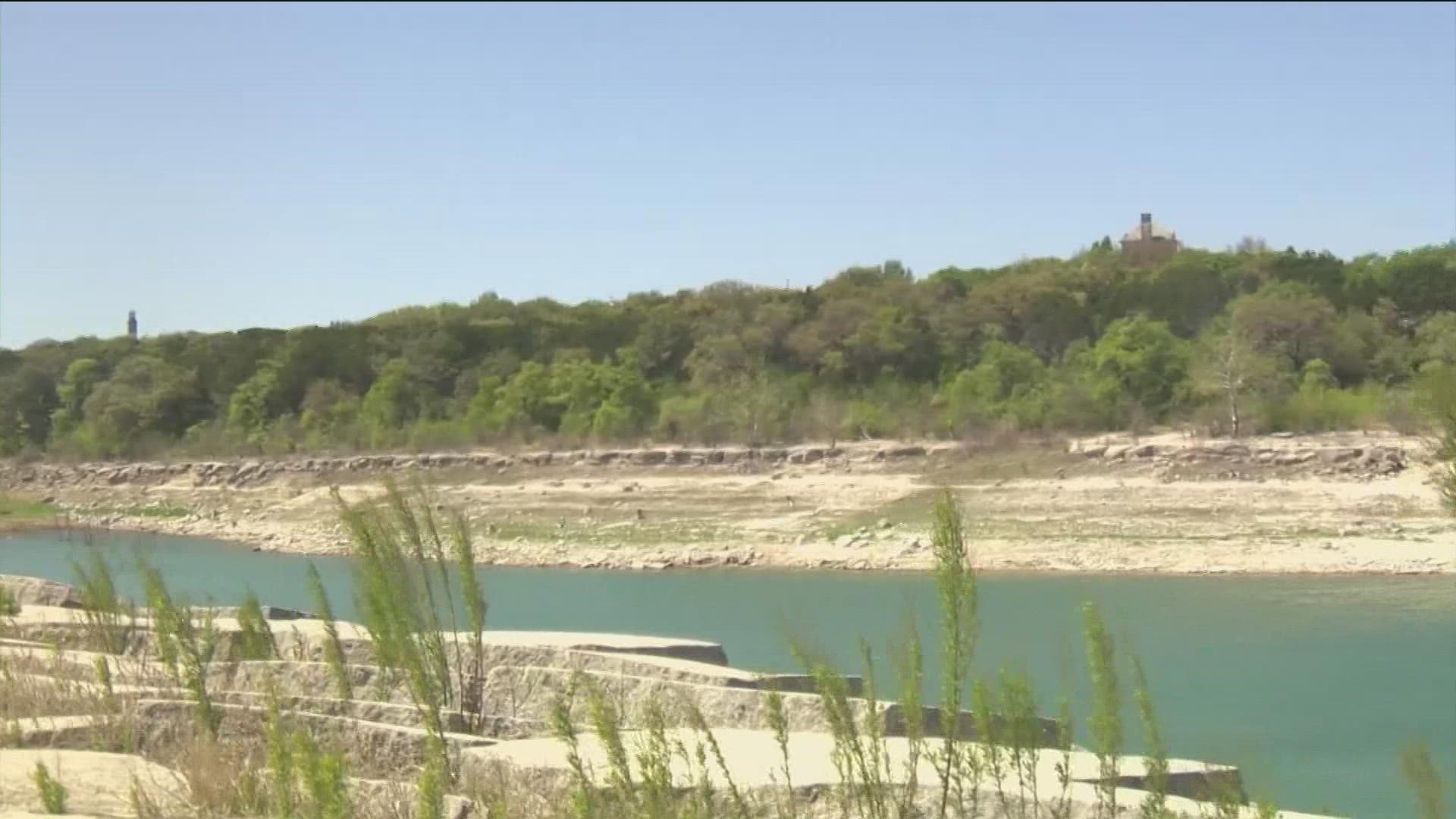AUSTIN, Texas — No Highland Lakes water will be available for the second growing season for Lower Colorado River Authority (LCRA) agricultural customers in the lower Colorado River basin this year as severe drought conditions continue across Central Texas.
On Saturday, the LCRA said the determination under the State-approved Water Management Plan affects interruptible water customers in the Gulf Coast, Lakeside and Pierce Ranch agricultural operations in Colorado, Wharton and Matagorda counties.
The Water Management Plan, which was approved by the Texas Commission on Environmental Quality, requires LCRA to cut off water from the Highland Lakes to interruptible customers during conditions such as the current drought so water supplies will continue to be available to cities, businesses and industries.
“This is a serious drought,” said John Hofmann, LCRA executive vice president of Water. “The majority of the Hill Country has only received between 5 and 10 inches of rain since October, well below average, and the amount of water flowing into the Highland Lakes from January through June is the lowest on record for that six-month period.”
According to the U.S. Drought Monitor, all of the Hill Country watershed that feeds the Highland Lakes is considered to be in extreme drought.
On Monday, June 6, Austin entered Stage One of its drought contingency plan. Automatic irrigation is limited to once a week, between 7 p.m. to 8 a.m.
The cities of Georgetown and Round Rock have both increased water restrictions for residents. Georgetown announced on Tuesday, June 28, that irrigation system or hose-end sprinkler watering will now be limited to one day a week.
The City of Round Rock announced on Wednesday, June 29, that it has entered Stage 1 of its mandatory drought restrictions, which enforces a maximum of two outdoor watering days per week for customers.
“We have plenty of drinking water supplies available in the Highland Lakes, but we need to start tapping the brakes on water use because we don’t know when this drought will end,” Hofmann said. “Last week’s scattered showers were welcome but weren’t enough to do much good in terms of water supply. We have been extremely hot and dry since late last year, which means evaporation is up and customers are using more water. Those factors, combined with the scarce amount of water flowing into the Highland Lakes since last fall, have caused lake levels to drop.’’
Levels in lakes Buchanan and Travis, the two water supply reservoirs in the Highland Lakes, are expected to continue to decline throughout the summer. The lakes were designed to fluctuate by capturing water during rainy times and holding it for use during drier times such as these, LCRA said.
On July 1, the combined storage of lakes Buchanan and Travis was 1.278 million acre-feet, LCRA said. It has been more than 18 months since the lakes were last full, and the cumulative inflows are below the inflow intensity test in the Water Management Plan.
This marks the first time water available for interruptible customers has been cut off under the most recent update to the plan, which went into effect in 2020. LCRA curtailed the amount of water from the lakes available during the second growing season in 2018 and cut off water from the lakes for interruptible customers in 2012 through 2015.
PEOPLE ARE ALSO READING:

